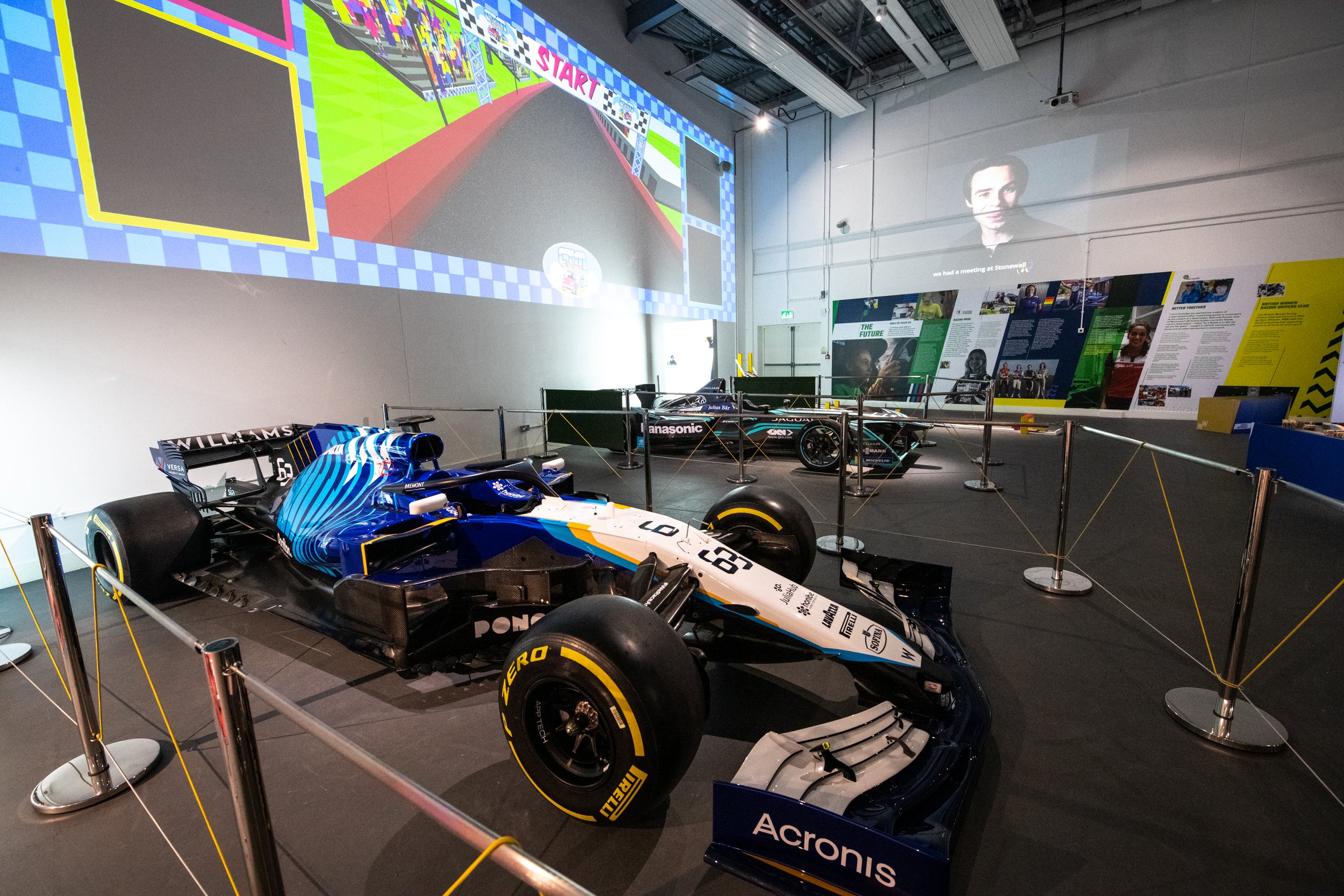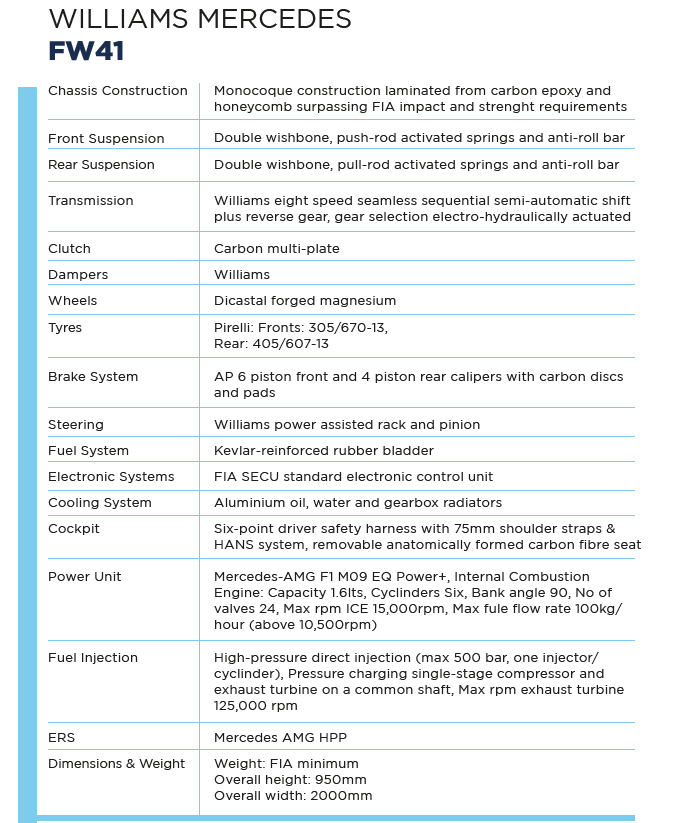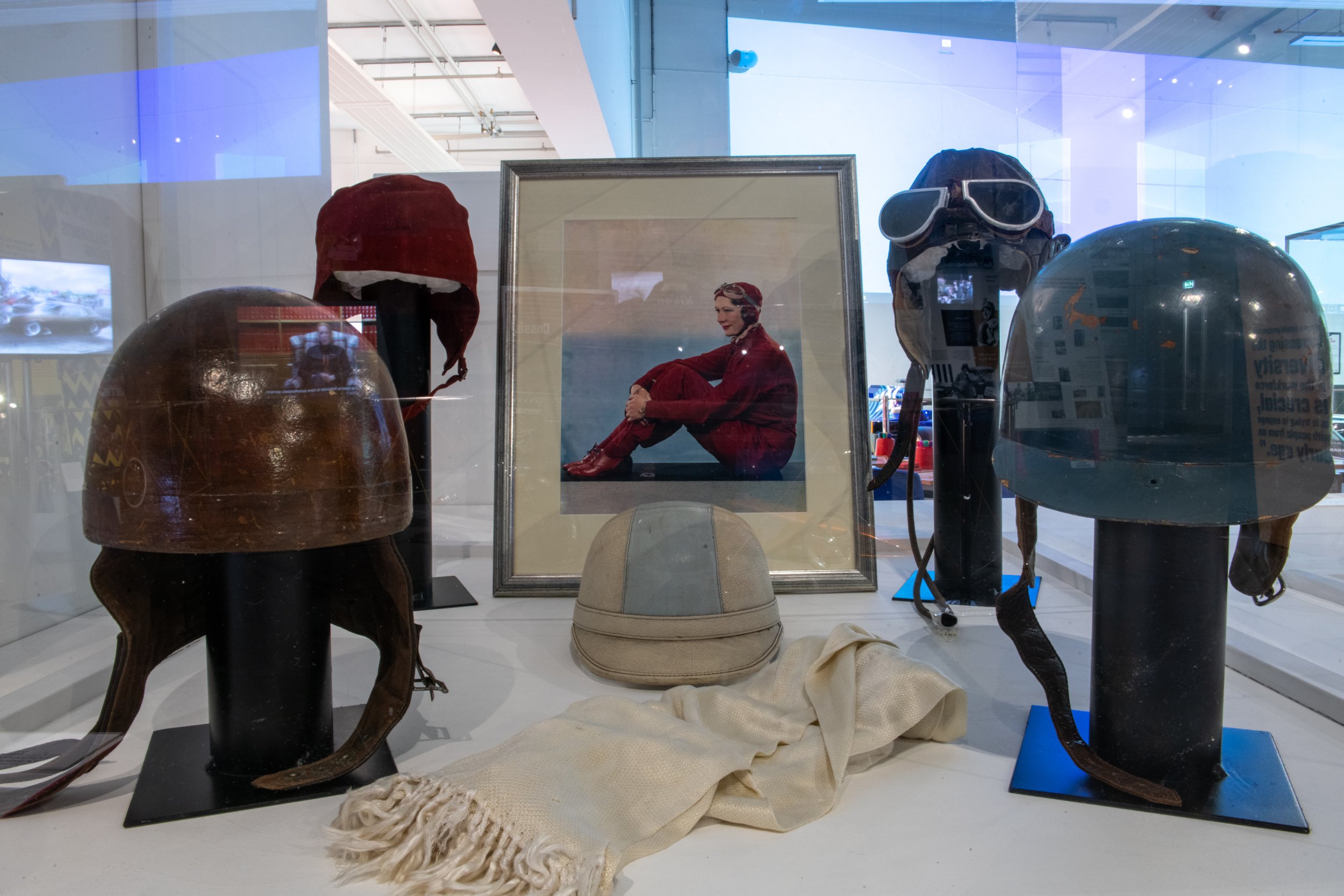
Women in Motorsport
Coventry Transport Museum
29 January - 29 May 2022
What does it take to be a women racer on two wheels or four? Whether you are an engineer, pit crew, business backer or driver if you don’t have the passion, it’s not for you. Pushing the boundaries, challenging the accepted and never giving up are the keys to success.
The thrilling exhibition, ‘Women in Motorsport’ introduces visitors to the personal stories of women while profiling diversity in the automotive industry. A range of motorsport companies, individuals, organisations and heritage partners have come together to celebrate the aspirational achievements and historical perspectives on motor racing, as well as current developments such as grass-roots and pro-racing.
Motorsport is open to all to have a go. However, only a few get to do it as a paid profession. All professionals start at a basic grass roots level. Go-karting has kickstarted the careers of many world champions. Track racing has many levels to progress through, building skills and experience as you go. Many teams have cadet, junior and rookie tiers to support and nurture talent.
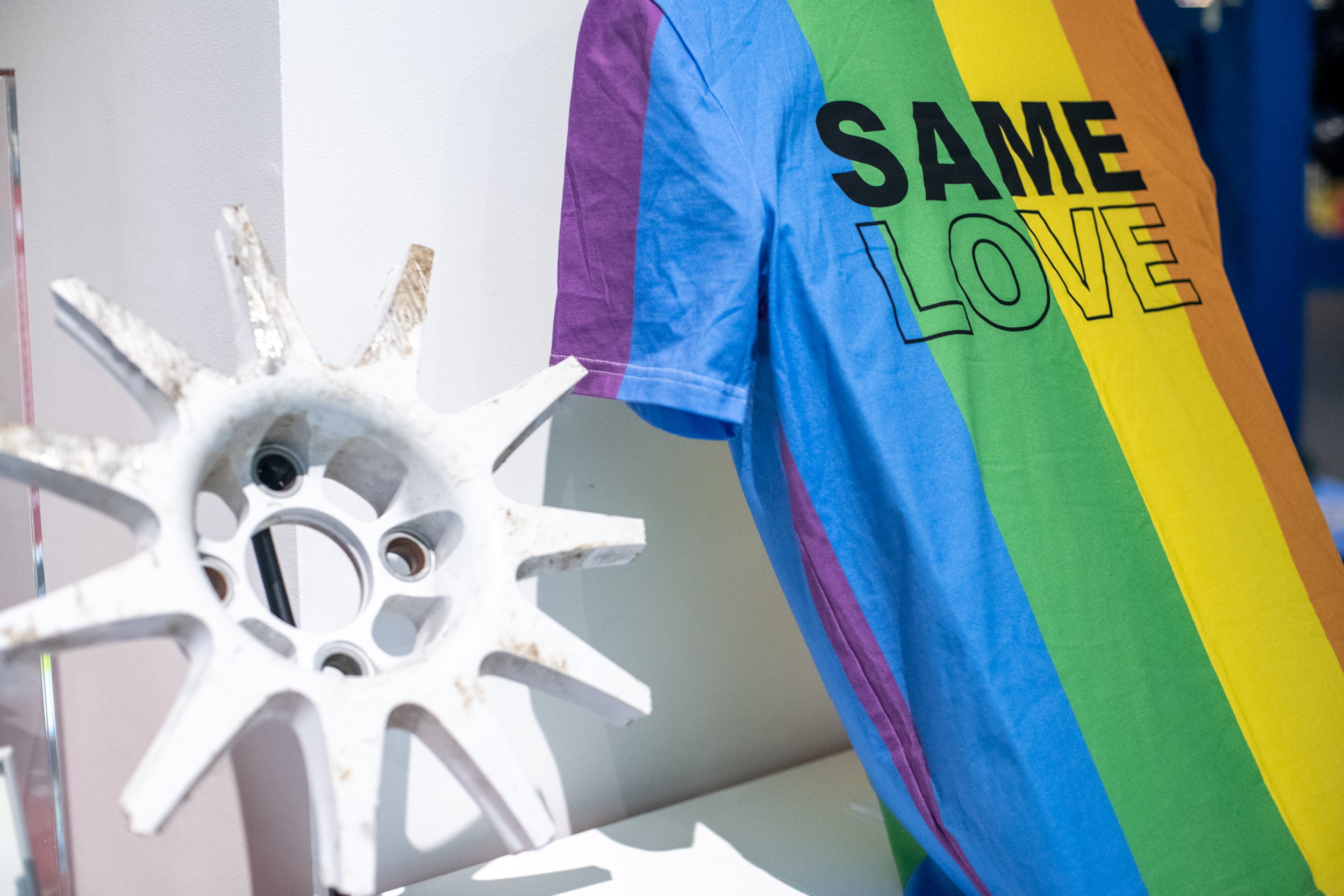
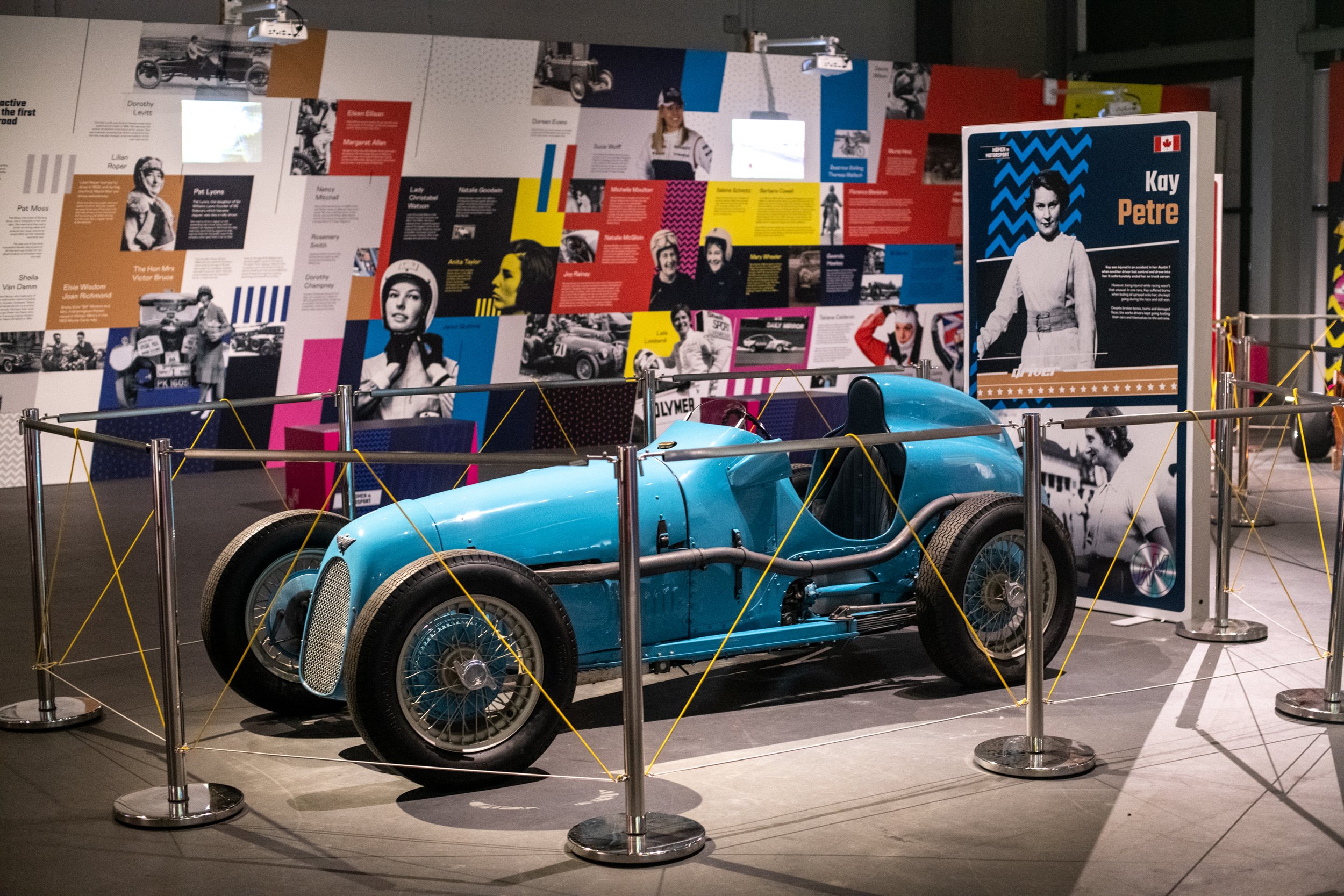
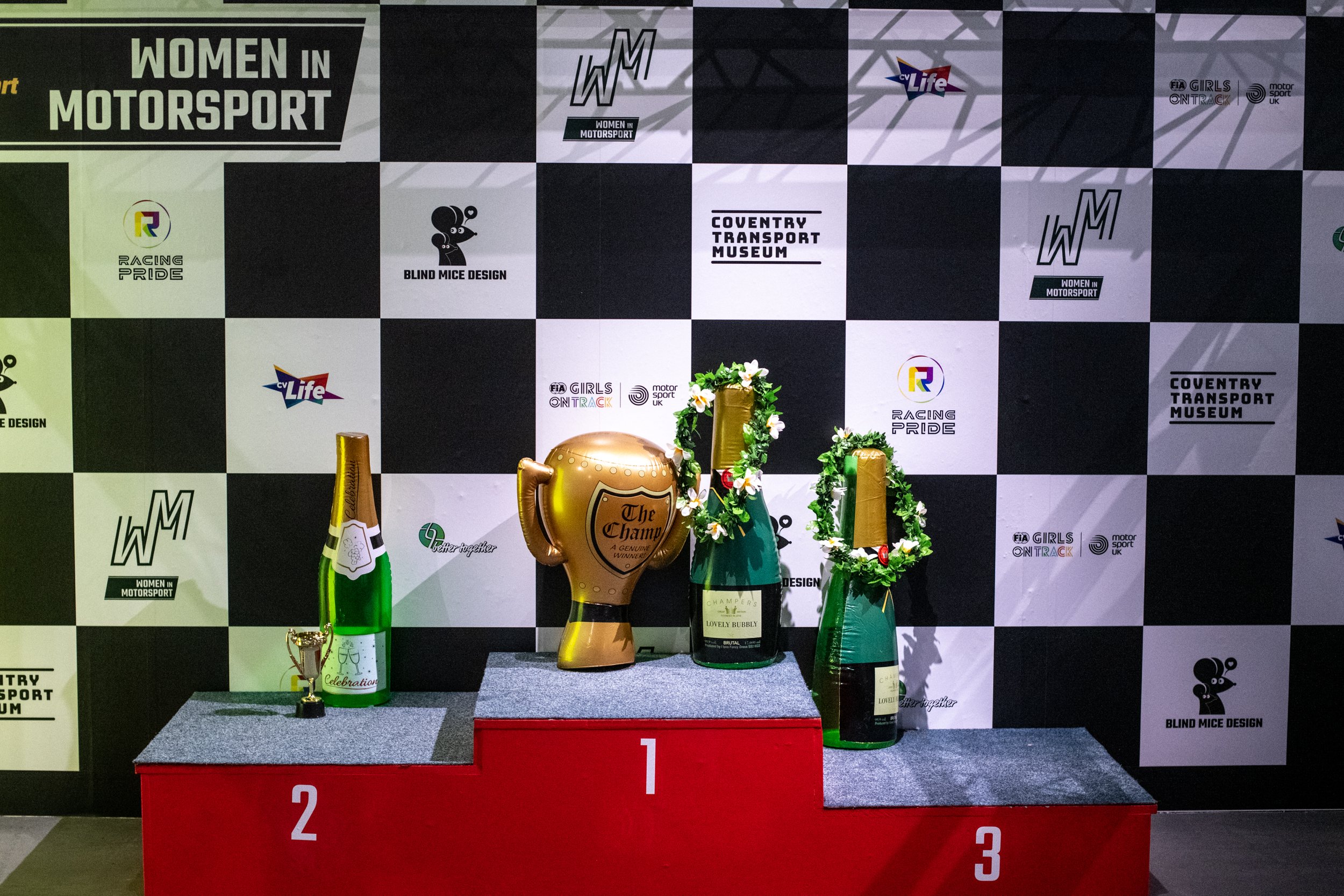
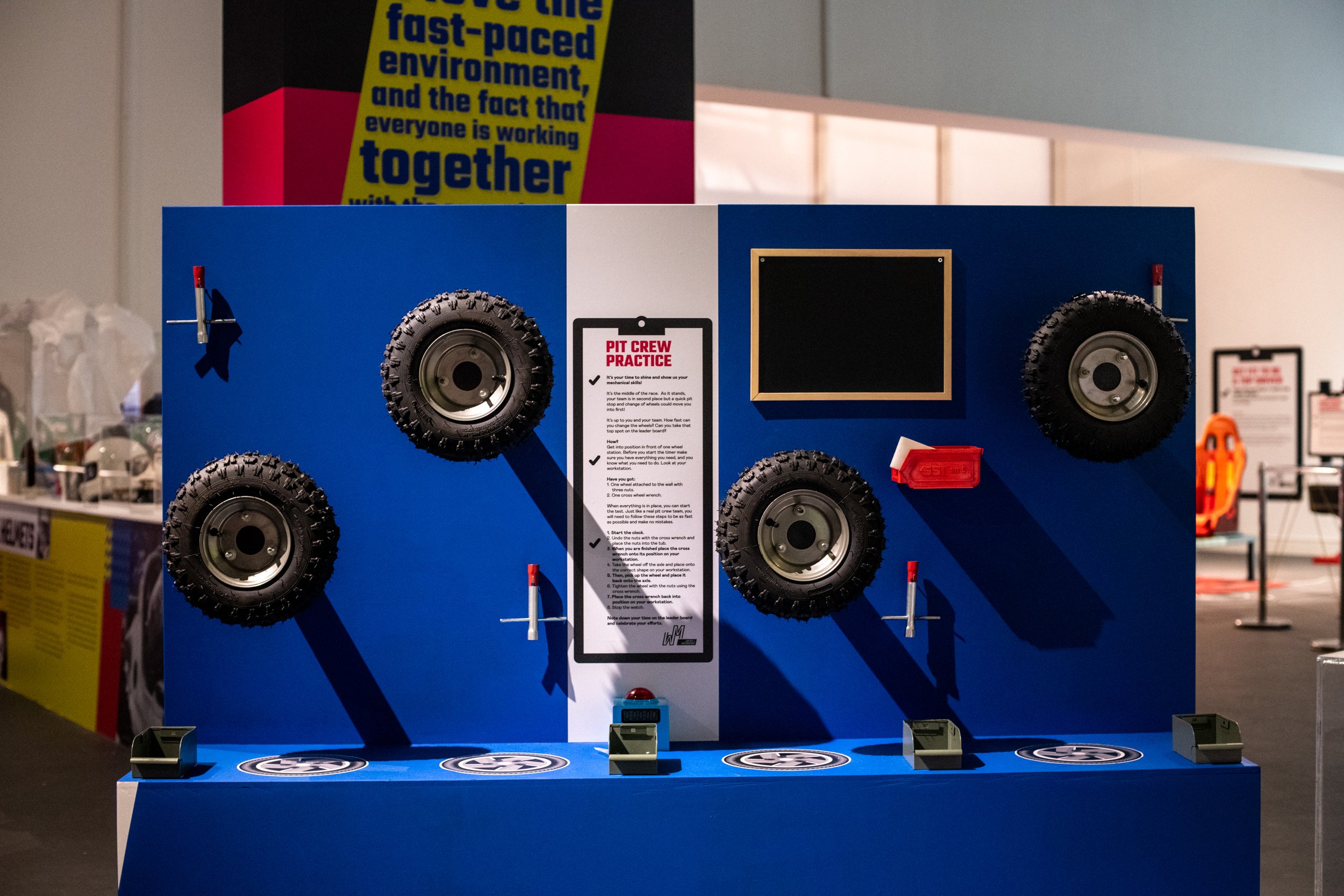
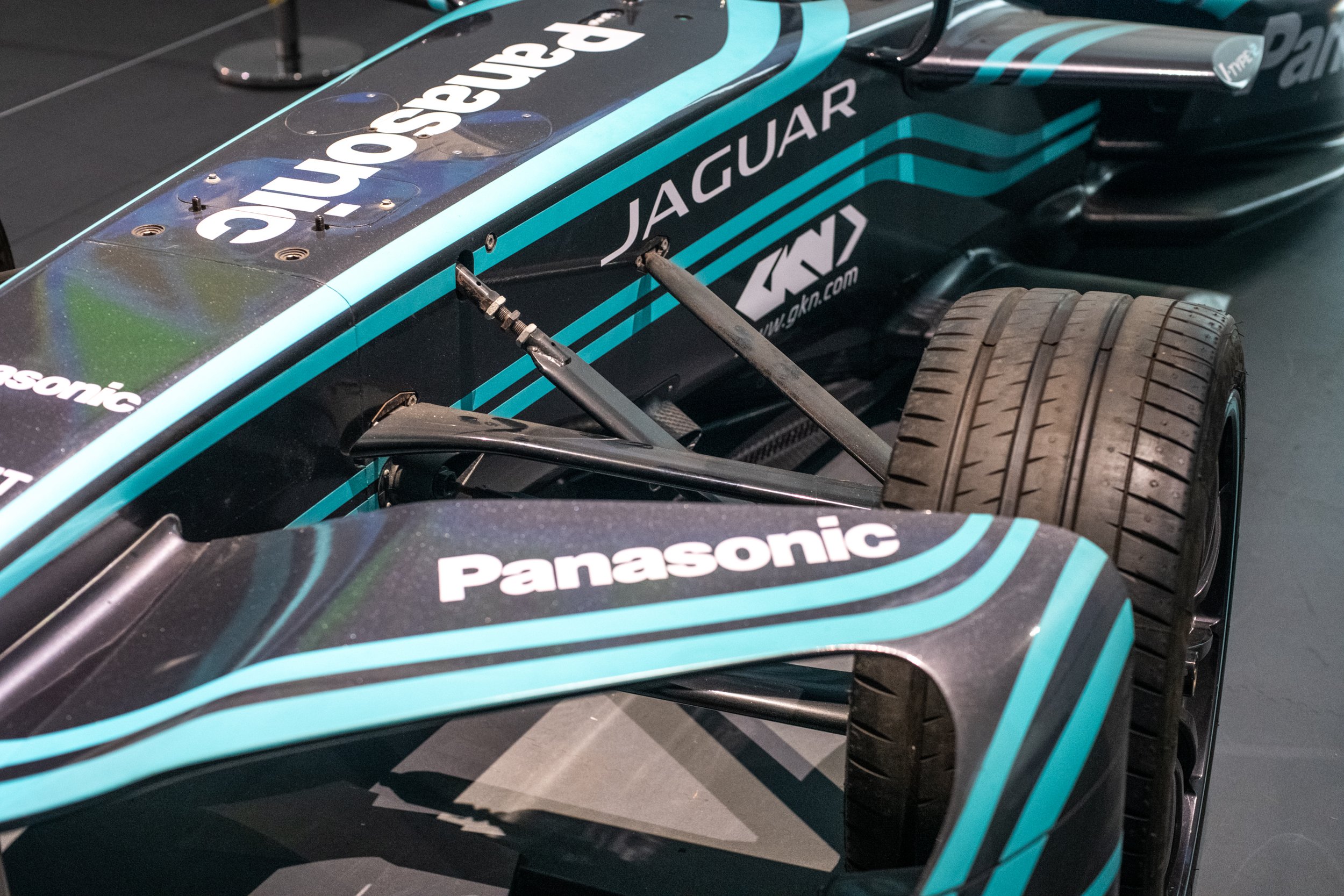
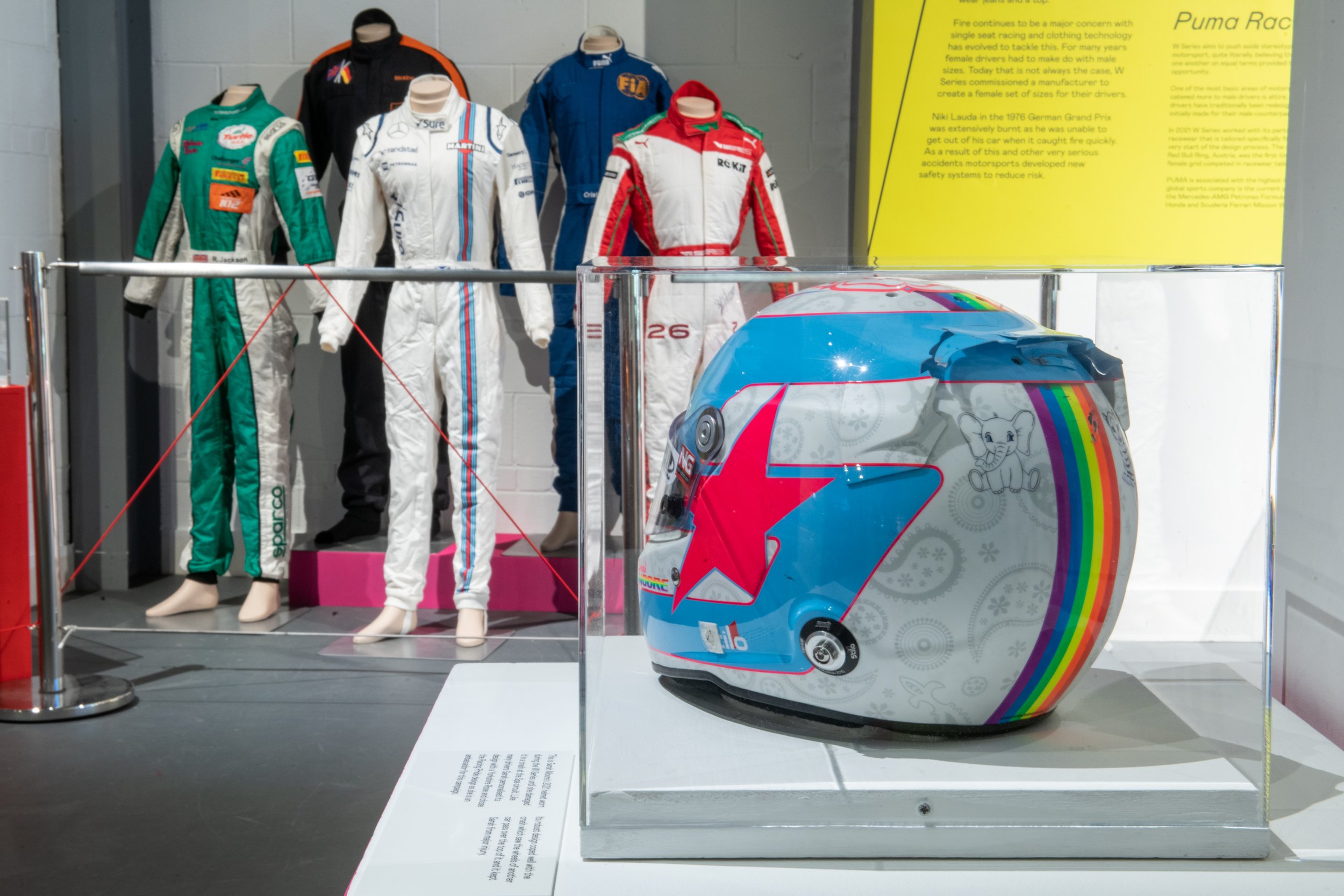
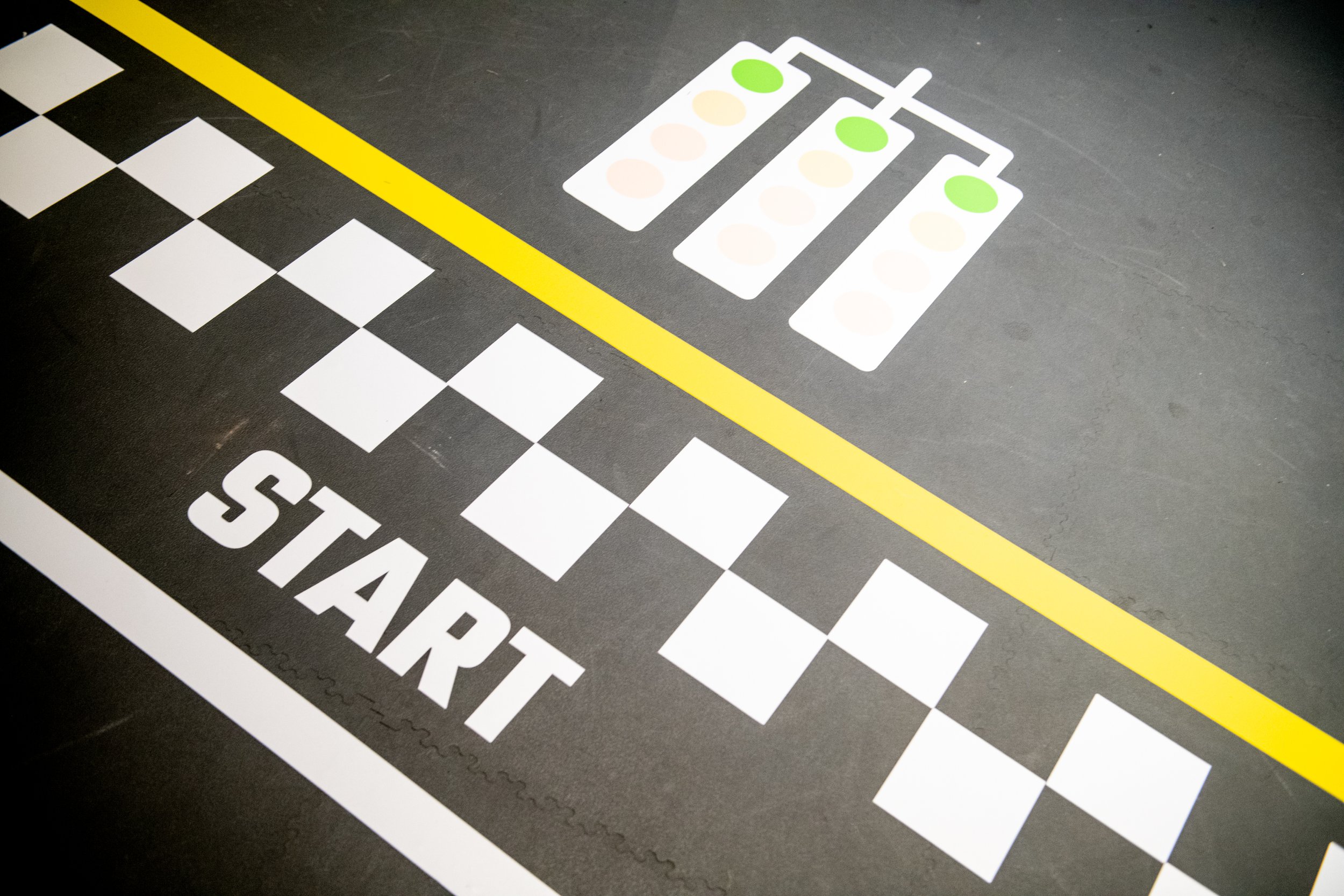
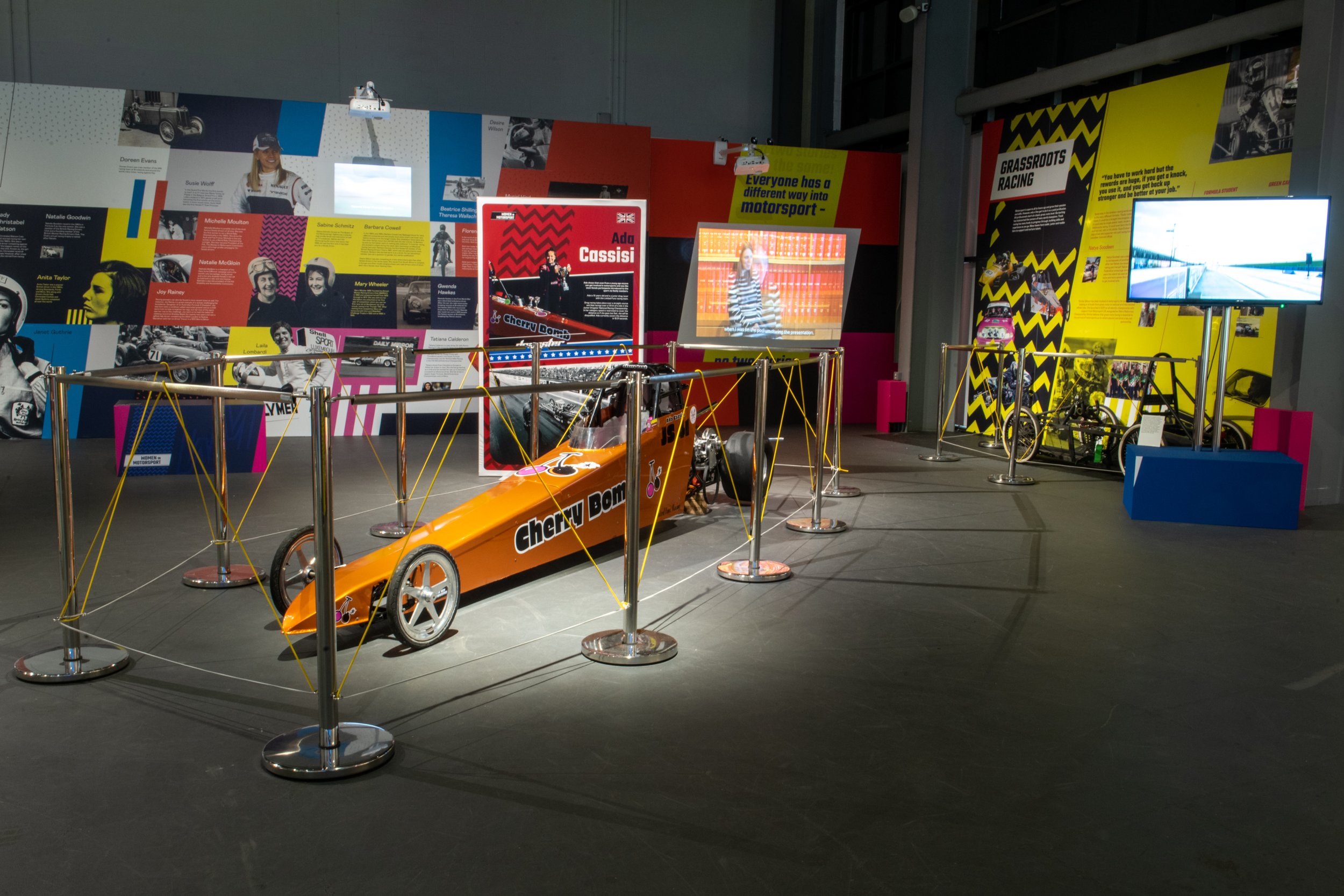
Some stay in the amateur racing world and race in their spare time in the many different formats. Tracks come in many surfaces and types; it could be a straight-line dragster or complex circuits, single seater, team, modern, classic car, or motorcycle racing. It could even be in the form of streetcar racing and hot rod, rally, or hill climbs.
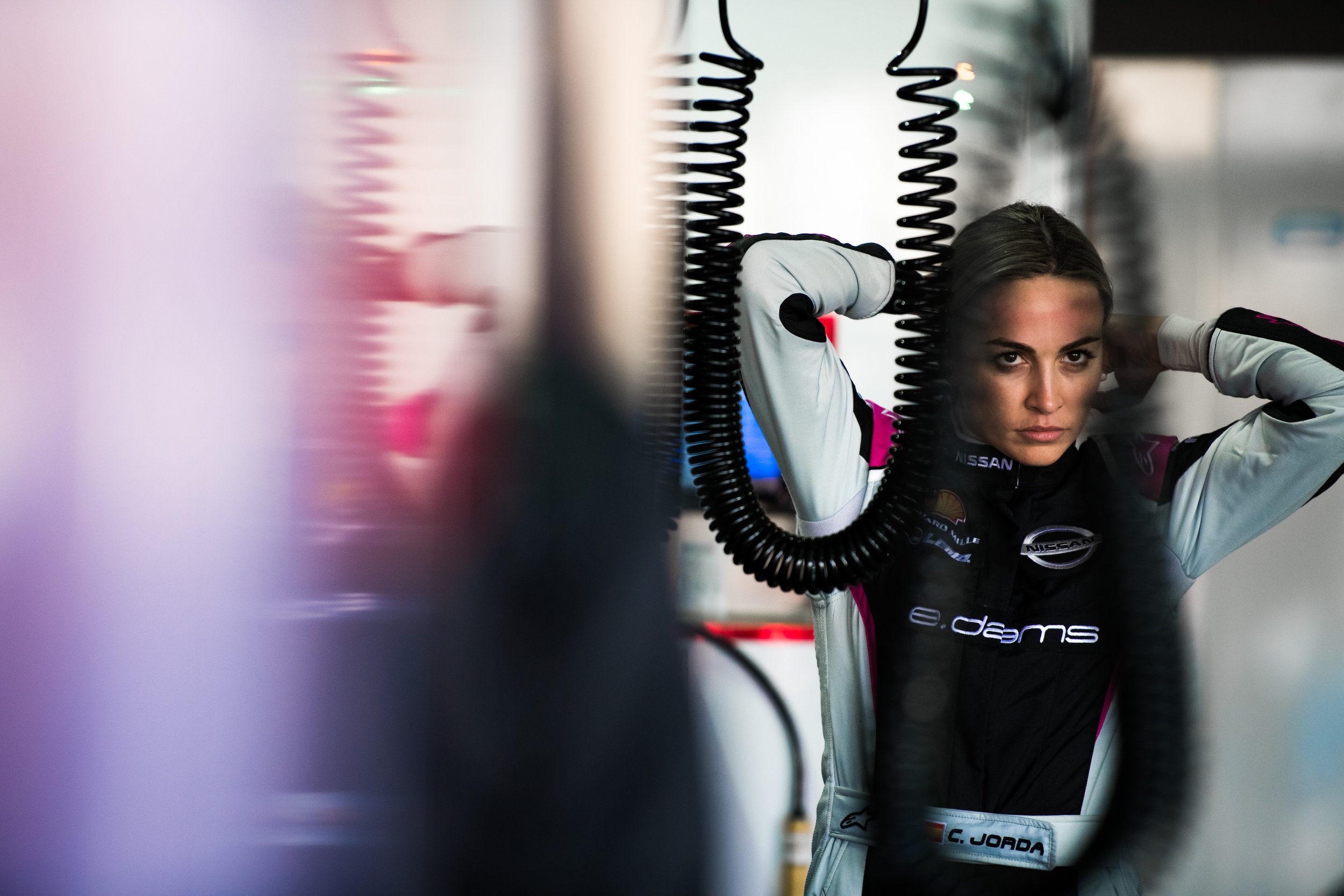
The Women
Kay Petre
Kay Petre was injured in an accident in her Austin 7 when another driver lost control and drove into her. It unfortunately ended her on track career. However, being injured while racing wasn’t that unusual. In one race, Kay suffered burns when boiling oil sprayed onto her, she kept going during the race and still won.
Despite broken bones, burns and damaged faces the works drivers kept going testing their cars and themselves to the extreme.
Kay is best known for some of her Brooklands achievements including setting 3 lap records. She raced many types of cars but was very successful in the Coventry built Rileys. She raced all over the world and not just on track but also in hill climbs as well.
The Austin 7 we feature is the surviving example of the model Kay drove when she suffered her career ending crash.
Ada Cassisi
Ada Cassisi and her Cherry Bomb dragster show that even from a young age anyone can get involved in motorsports. Ada is 10 years old and is a junior drag racer with the Limited Funz racing team - like most female participants she was introduced to the sport through family. Drag racing takes place over a straight course. In Ada's category speed is restricted to cover the distance; she currently covers the distance of 1/8 th of a mile in 12.01 seconds.
Claire Johnson
CEO of The Naked Warrior, Claire Johnson is a female empowerment coach who provides nutrition, training and mindset coaching to women in motorsport. Her programs focus on improving driver performance, fitness, endurance, focus and health so they can perform their best under pressure. Claire is part of the Formula Woman Health and Fitness team, an ambassador and competitor for BIKC and Team Sport Indoor Karting.
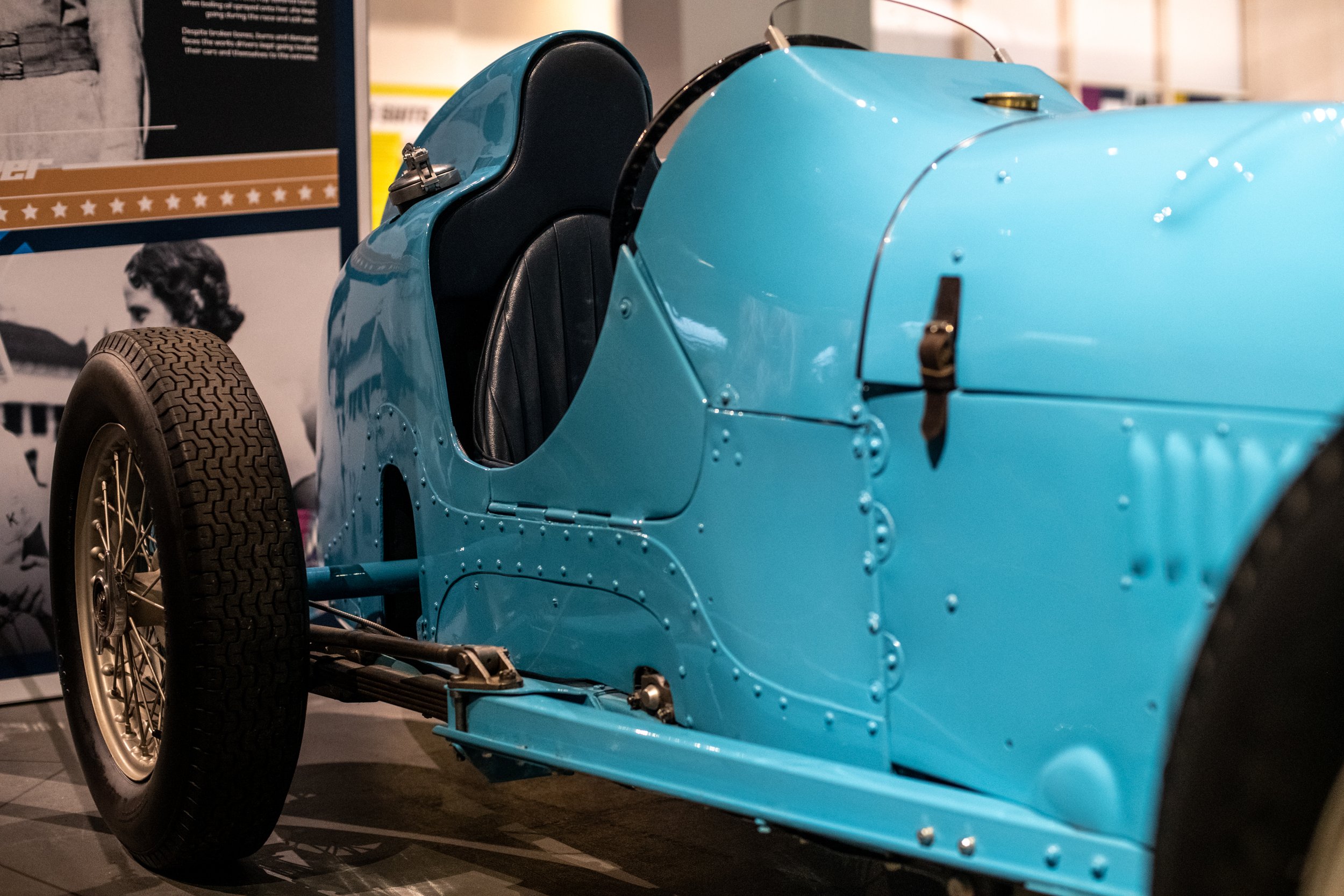
The Cars
Jaguar I-Type 3
The new Jaguar I-Type 3 powertrain has been developed entirely in-house. Its electric motor is 25% more powerful and capable of 250kw.
F1 Brake Calliper & Clutch
New technology is often first seen on the racetrack before making the jump to the domestic market. This is an F1 brake calliper and a clutch made by AP Racing based here in Coventry, one of the leading manufacturers of performance brake and clutch systems for road and race cars.
Greenpower Kit Car
The motorsports students at North Warwickshire and South Leicestershire College have been working together building a Greenpower kit car. They are using their knowledge learnt on their programme to design the drivetrain and chassis to make it travel the furthest distance per set of charged batteries possible. Students have been collaborating with the Body and Paint learners to design the body out of lightweight materials with low resistance as the next step.
Wind tunnel Scale Model
This is a front wing tip assembly from a 60% scale model for use in a wind tunnel of the 2020 race car. The model is used in the state-of-the-art wind tunnel to test how the part would perform in race conditions.
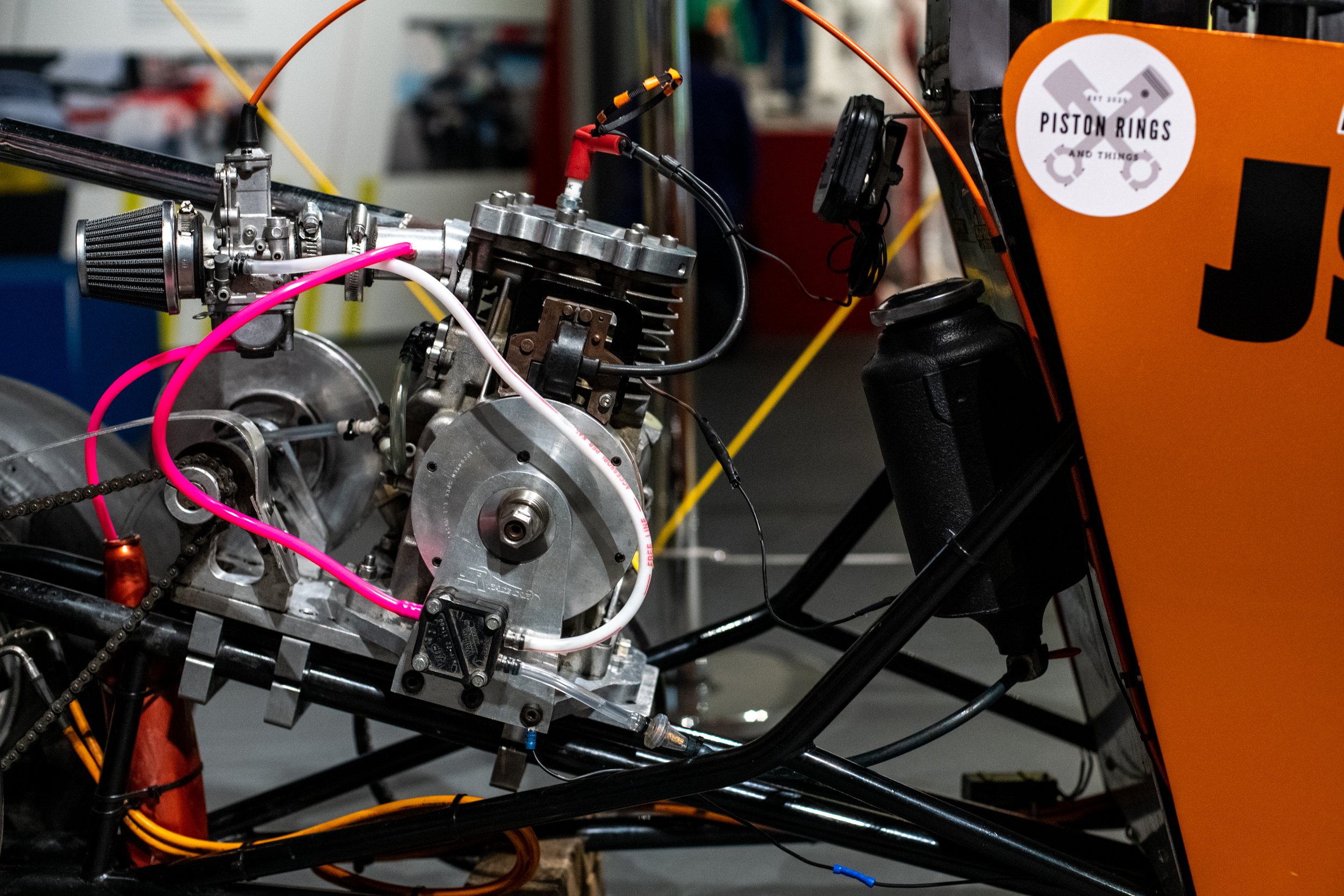
“Everyone has a different way into motorsport - no two stories are the same!”
Williams Mercedes
Williams is is a British Formula One motor racing team and constructor.
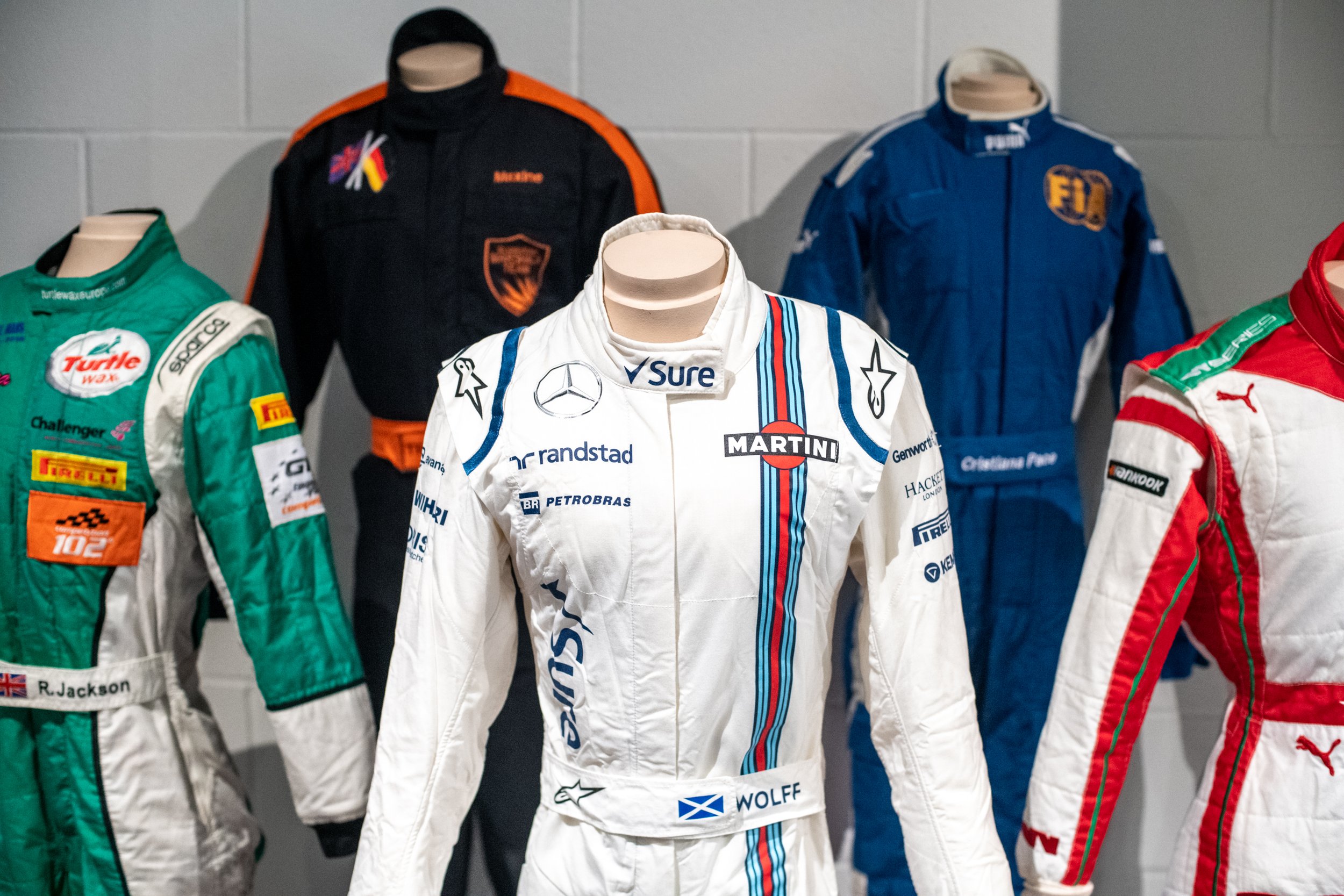
Uniforms & Helmets
One of the most basic areas of motorsport which has historically catered more to male drivers is attire. Race suits for female racing drivers have traditionally been redesigned versions of those initially made for their male counterparts.
In the early days of racing a simple overcoat was all the protection drivers had. Dorothy Levitt was a driver famous for her racing clothes. The duster coat she wore was influenced by horse riding clothing and it helped to keep her clothes protected when driving open cockpit cars. She was also known for her stylish hats tied on with a scarf.
The race suits we see today evolved out of the early boiler suits drivers wore. They were designed to help keep the driver's body temperature stable and give some fire protection. Lady Christabel Watson (nee Carlisle) remembers making her own suit after watching the men in their fire-retardant overalls and wanting a set that fitted her rather than continuing to wear jeans and a top.
In 2021 W Series worked with its partner PUMA to create racewear that is tailored specifically for the female body from the very start of the design process. The season-opening race at the Red Bull Ring, Austria, was the first time in history that a fully female grid competed in racewear tailored for women.
PUMA is associated with the highest levels of motorsport. The global sports company is the current partner in Formula One of the Mercedes-AMG Petronas Formula One Team, Red Bull Racing Honda and Scuderia Ferrari Mission Winnow teams.
Fire continues to be a major concern with single seat racing and clothing technology has evolved to tackle this. For many years female drivers had to make do with male sizes. Today that is not always the case, W Series commissioned a manufacturer to create a female set of sizes for their drivers.
Niki Lauda in the 1976 German Grand Prix was extensively burnt as he was unable to get out of his car when it caught fire quickly. As a result of this and other very serious accidents motorsports developed new safety systems to reduce risk.
Race suits today fire retardant with a limited fire exposure time rather than being fireproof. Many suits have epaulettes on the shoulders to help pull a driver out of their seat if needed. Different racing roles have different needs from their protective suits. For example, the refuelling team will have additional fireproof layers and this technology is continuing to evolve over time.
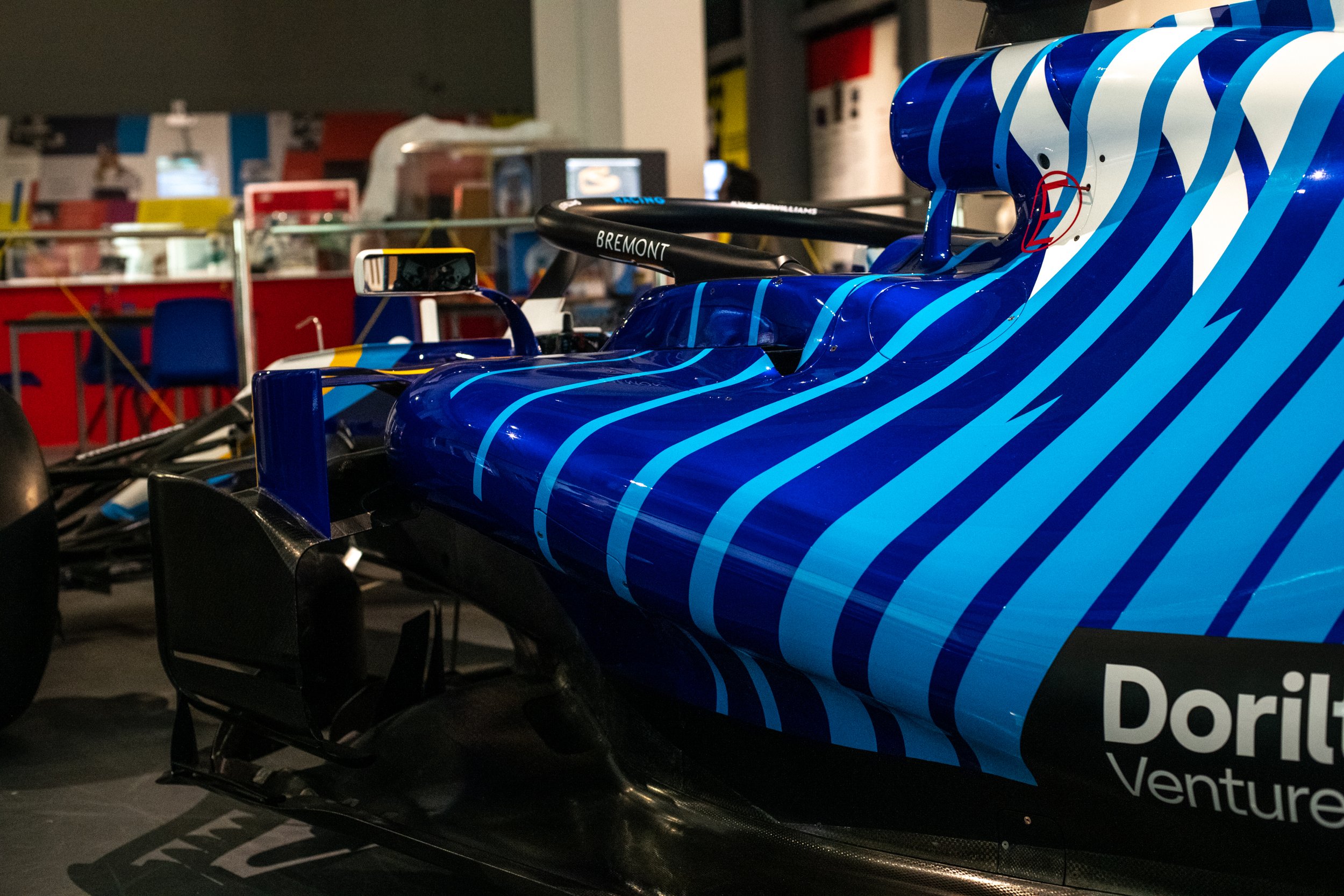
“I love what I do because it’s a real buzz driving and competing on the edge of traction and being part of the motorsport family is incredible.”
Today, helmets are a common sight in motorsport, however they have only really been around for 60 years. To start with the first helmets were leather pilot style caps from the 1920s. Many drivers carry personalised designs and artwork or emblem designs.
These were followed by the pudding basin shaped hard shell helmets which became more common from the 1930s. Hard helmets became compulsory in F1 in the 1950s. By the 1930s goggles came into use and later built-in visors were adopted and used until the 1970s.
Many years earlier Jill Scott Thomas became famous for her red racing outfit. It was made from natural fibres which burn slower than manmade material. This is the same reason why Second World War pilots wore leather gloves and jackets as well as silk scarves to help them survive fire and cold weather.
Since the 1970s helmets moved onto a fully enclosed style that were shaped for aerodynamics. Custom made carbon fibre with Nomex fire retardant linings are today standard in helmets and safety standards are rigorous. Communication systems were added, and some helmets are adapted for the role of the wearer. For example, engineers can have removable plugs put into their helmet so they can listen to the change in engine noise.
Many drivers today carry personalised designs and artwork however this isn't a new idea. In the 1960s, 50ccmotorcycle racer, Barbara Bound remembers painting her helmet with the Montesa motorcycles emblem design.
This is Sarah Moore’s 2021 helmet worn during the W Series until she damaged it in a crash at the Spa circuit. Like many drivers Sarah personalised its design with a Yorkshire Rose and chose the Racing Pride design as she is an ambassador for this campaign.
Its robust design coped well with the crash which saw the wheels of another car pass over the top of it and it kept Sarah safe from major injury.
There are different helmets for different motorsports depending on the hazards involved with that sport. For example, motorcycle helmets may have a different fire resistance as riders are normally thrown away from their bikes in an accident rather than fire being the main risk. Their helmets must be able to survive a different type of impact than those worn by racing car drivers. Visibility needs are also differ in different sports for instance, motorcycle riders need a wider field of vision so a result helmet design reflect this need.
STEM Profiles
We have spoken to a variety of individuals who work within STEM and the motorsport industry…











